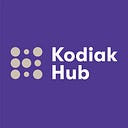A Shift in Sourcing; Sustainability and Strategy in Focus.
A story hits the press about child labor in Walmart’s supply chain, 1996, or the news breaks that McDonalds is using unpalatable bits of meat in their burgers, 2013 (Kim et. all 2016).
Supply chain operations and strategies are more visible, today, than ever before.
Whenever, or wherever the sourcing shift took place is a bit fuzzy, but the rather apparent bit is that a shift has indeed taken place.
Sourcing of goods and materials has done a complete 180 in the last 20 years.
The days of low-cost sourcing, pinching pennies on top-line revenue, are quickly disappearing. Consumerism has a new face, and it’s readily wearing a concerned expression. Internationally accepted quality standards have trumped the previous, quick fix, consensus of profitability through low-cost sourcing.
Sourcing, operating as a means to solely create financial gain and opportunity has shifted to a strategically imbedded corporate focus of great complexity.
“Now, globalization, aided by rapid technology innovation, is changing the basis of competition. It’s no longer a company’s ownership of capabilities that matters but rather its ability to control and make the most of critical capabilities, whether or not they reside on the company’s balance sheet” (hbr.org).
Dynamic supply chains, executing sourcing functionalities in a responsive and flexible manner will thrive in the new digital global marketplace (ISM).
Strategy and value creation are the new norms of sourcing, and from what I can tell, the shift in methodology is here to stay.
Sourcing is Sustainable.
In a study by Kim et. all in the Journal of Business Ethics, 2016, the trends in literature based around the ideology of sustainable and ethical sourcing was researched.
As shown in the graphic below, the last 20 years of literature contributed as 94.8% of the academic articles published in the field of ethical sourcing (Kim et all 2016).
Before the early 80’s, ethical sourcing, as a published theory, hardly existed.
This illustrates the shift in sourcing ideology. Sustainable, ethical sourcing is still being shaped as a means of a strategic supply chain functionality today.
Brand visibility is a driving factor behind the sustainable sourcing movement. Sustainable sourcing strategies give brands the opportunity to set themselves apart from the competition. These kinds of sustainable supply chain initiatives act in a reciprocal manner. Developing sustainability from within an organization creates an image of an ethical business practices externally, and vice versa.
Briefly googling “sustainable and responsible sourcing” gave me thousands upon thousands of relevant articles, news stories and web links. Those, which I found the most intriguing, are listed below:
www.tetrapak.com/sustainability/responsible-sourcing
corporate.marksandspencer.com/plan-a/our-approach/business-wide/responsible-sourcing
www.clifbar.com/responsible-sourcing
www.kelloggcompany.com/en_US/corporate-responsibility/responsible-sourcing.html
www.pepsico.com/purpose/responsible-sourcing
These links are corporate sourcing initiatives, spelled out, and published at the disposal of the public eye.
Focusing on the first link, Tetra Pak, one can see that this is, simply, a way to inform a potential retailer/consumer of the company’s internal beliefs, initiatives, and strategies present, to actualize their responsible sourcing operations.
Their assurance system (displayed below) displays that they have “created an assurance system, integrated with our existing Corporate Governance Framework and underpinned by our vision, mission, core values and Code of Business Conduct” (Tetra Pak 2016)
Sustainable sourcing is becoming a standard for supply chain values in globally visible brands, but without strategic and operational efforts, they just remain values.
Luckily,
Sourcing is Strategic
Strategic sourcing, defined, is “a method of managing procurement processes for an organization in which the procedures, methods and sources are constantly re-evaluated to optimize value to the organization” (businessdictionary.com)
The shift of sourcing to a strategic function has put the focus on supply chain agility, management and transparency.
Agility, management and transparency in sourcing have quickly become standard practices for large-globally functioning supply chains.
The success of the new shift towards strategically focused sourcing has been due, in large part, to the massive technological advancements in the supply chain field.
Supplier relationship management software, IoT, Cloud based logistics, automation, warehouse management tools, eSourcing software, eProcurement software, mobile applications and the list goes on, I assure you.
Supply chain professionals have a plethora of tools at their disposal to better manage the day-to-day supply chain operations, and store analytical data for future strategic planning.
All of these digital advancements can better the optimization of sourcing strategically with a responsible-sustainable focus.
Sourcing is Shifted.
The trends suggest it, and the literature backs it up, sourcing has undergone a serious face-lift in the last 20 years.
Sourcing has become a means for strategic, operational and sustainable supply chain initiatives, which can bring return to top-line brand value, bottom-line operations, and society at large.
Utilization of technology has become the new foundation for building strong sourcing initiatives.
This shift in sourcing challenges the commonality of traditional supply chain practices, and illustrates that at the intersection of sustainability, business and technology, positive and progressive change has been created.
What more can a supply chain fanatic ask for?
Until next week.
This publication is brought to you by author Sam Jenks, but also on part by Kodiak Rating — A Supplier Relationship Management SaaS functioning out of Stockholm, Sweden. Kodiak Community intends to challenge traditional business practices with innovative thinking and creation.
